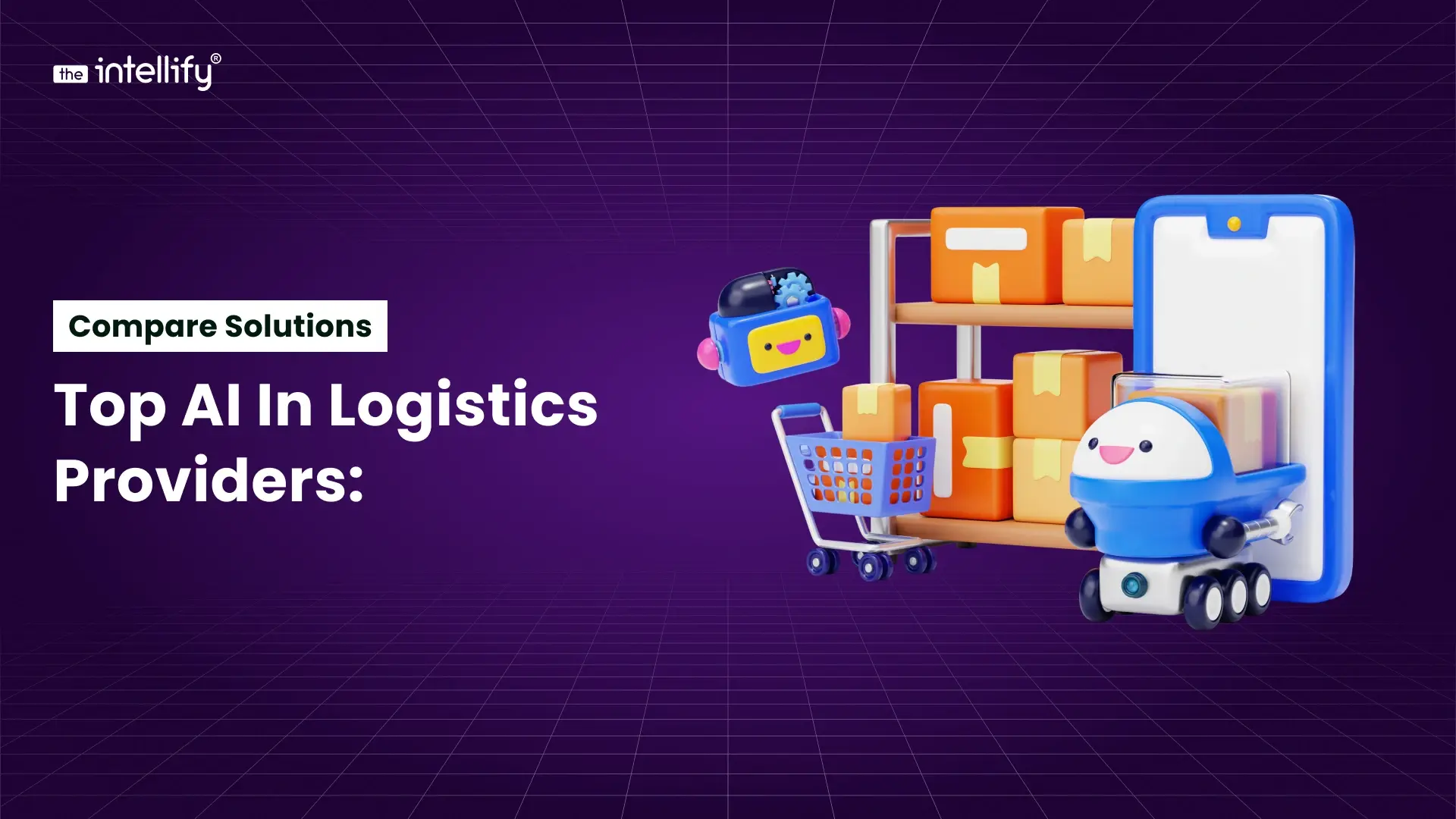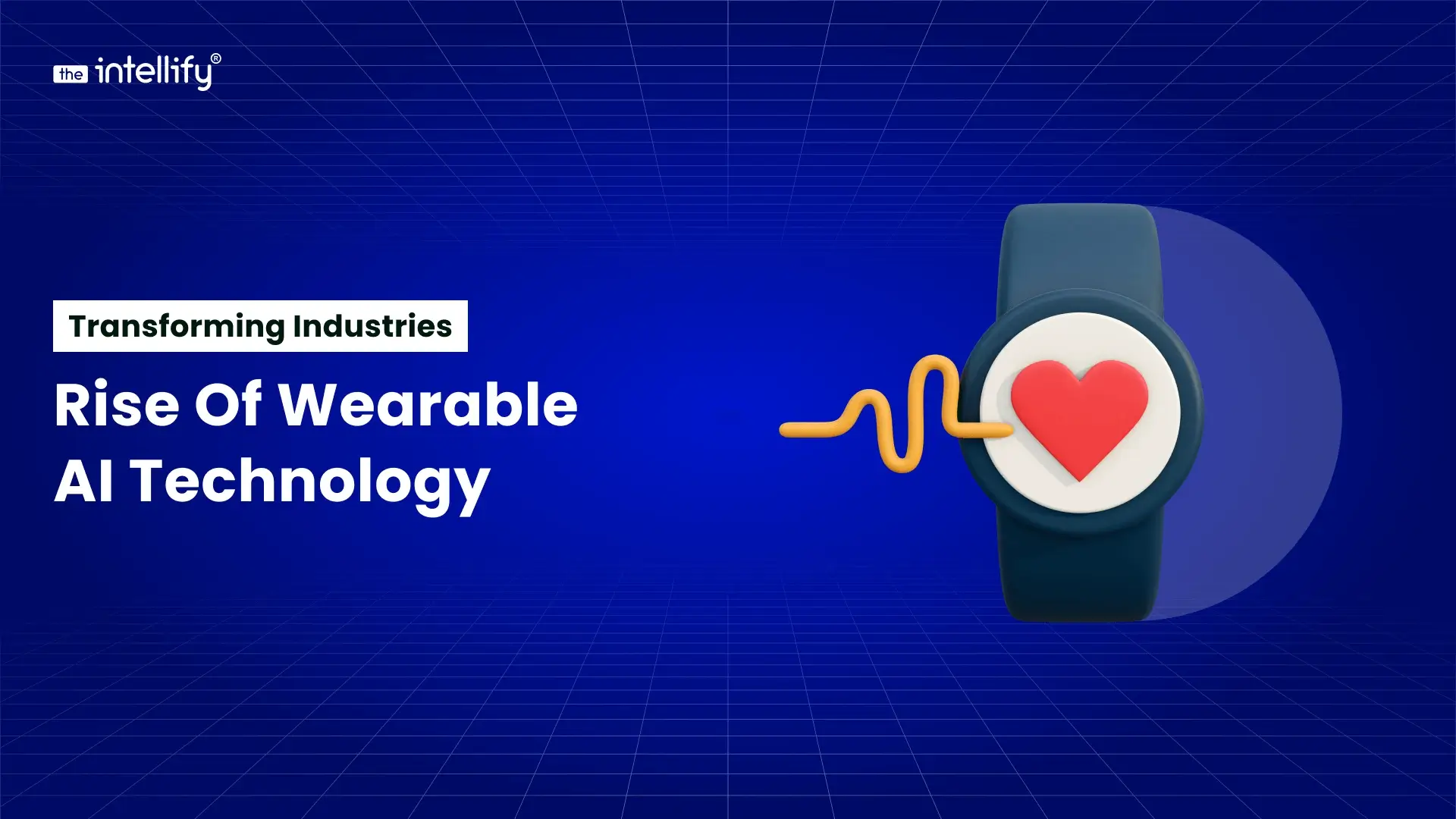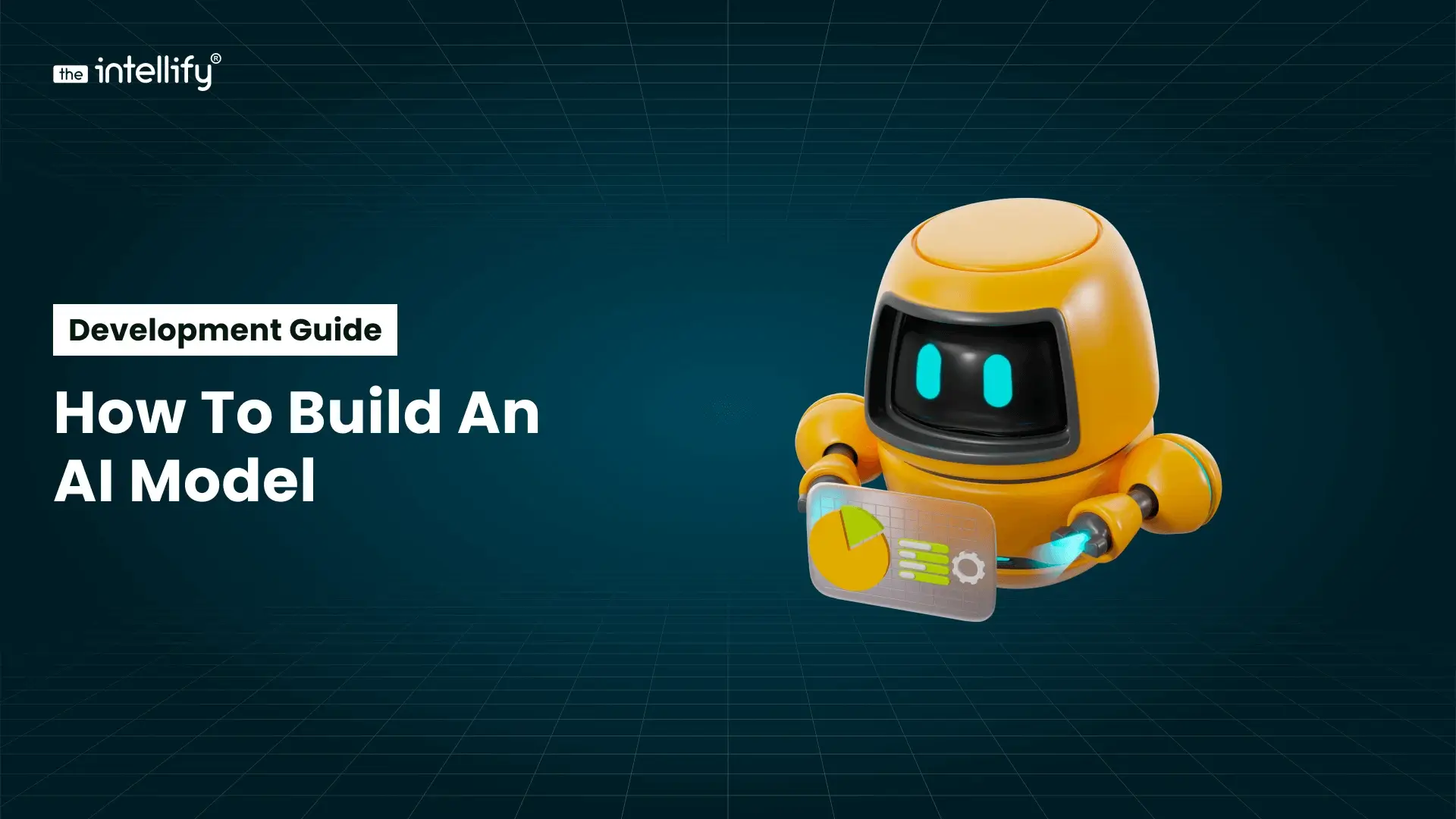Top AI in Logistics Providers: Compare Solutions & Get Started

By Shravan Rajpurohit
September 19, 2025

Quick Executive Summary
AI adoption in logistics is now a business imperative. The most urgent pain points logistics leaders face are poor visibility, high last-mile cost and routing inefficiency, and data and integration friction. This top-of-article section gives a short, practical playbook: connect telematics and carrier feeds for immediate visibility, run a focused routing A/B pilot for last-mile fleets, and complete a short data readiness sprint to unblock modelling. These three steps unlock fast wins and clear momentum for broader automation.
Top Quick Wins
- Connect GPS/telematics and two major carriers into a visibility platform to measure ETA accuracy and exception reduction within 6–8 weeks.
- Run a routing A/B pilot on 10–50 vehicles to measure miles per stop and driver time savings over 8–12 weeks.
- Execute a 2–6 week data readiness sprint for the pilot use case, fix timestamps, clean telemetry, and validate TMS extracts.
Industry Snapshot & Key Statistics
The AI in logistics market is rapidly expanding as companies invest in cloud-based logistics solutions, visibility platforms, robotics, and digital twins in the supply chain. Early adopters often report improved forecast accuracy, fewer exceptions, and measurable operational gains. Tech buyers evaluating investments should prioritise use cases with clear KPIs: exceptions reduced, miles saved, and forecast error improvements.
Why AI Matters for Logistics Leaders
AI in logistics and supply chain uses machine learning, optimisation, computer vision, and agents to automate decisions and surface insights. AI enhances logistics planning services, optimises logistics transportation services, improves warehouse logistics services, and powers immersive AR/VR training and digital twin simulations. In short, AI amplifies human expertise, enabling smarter, faster decisions and leaner operations.
Pain Points, What Works, and Practical Fixes

Pain: No end-to-end visibility
Why it matters: Lack of visibility causes missed SLAs, high customer service load, and detention/demurrage fees.
What works: Real-time telematics plus predictive ETA models and exception workflows. Vendors like FourKites and project44 lead here, while integrators such as The Intellify build tailored dashboards and connectors.
Quick action (6–8 weeks): Map top lanes by risk, ingest telematics and EDI feeds, and run a visibility proof measuring exceptions per 1,000 shipments.
Pain: High last-mile cost and routing inefficiency
Why it matters: Last-mile often represents the largest share of delivery costs; inefficient routes waste fuel, driver hours, and customer trust.
What works: Algorithmic route optimisation, driver-friendly navigation, and live re-routing. UPS’s ORION exemplifies long-term gains from tightly integrated optimisation. Pilot routing on a fleet subset, run A/B tests, and measure miles per stop and fuel reduction.
Pain: Inventory mismatch and excess safety stock
Why it matters: Stockouts lose sales; excess inventory ties up capital.
What works: Demand forecasting, SKU segmentation, and automated replenishment. Start with top SKUs or stores and measure forecast MAPE and days-of-stock.
Pain: Costly reverse logistics and returns processing
Why it matters: Returns are manual and slow, eroding margins.
What works: Vision-based triage, automated decision trees for disposition, nd integration with aftermarket channels. Prototype a vision PoC to auto-categorise returned items and route them to refurbishment or resale.
Pain: Data & integration friction
Why it matters: Bad data stalls pilots and produces unreliable outputs.
What works: Short data engineering sprints, feature stores, and robust ETL. Treat readiness as the first deliverable.
Core AI Use Cases and Benefits
– Predictive Analytics & Forecasting: Reduce stockouts and carrying costs through improved replenishment and procurement.
– Autonomous Vehicles & Robotics: From AMRs in warehouses to truck autonomy, robotics cuts labour costs and increases speed.
– Conversational AI & Assistants: 24/7 support and automated dispatch reduce manual handling of routine tasks.
– Warehouse Automation & Digital Twins: Digital twin simulations and vision systems optimise layouts, throughput, ut, and staffing without risking floor operations.
– Route Optimisation & Visibility: Dynamic rerouting saves fuel and improves on-time delivery, while real-time tracking shrinks exception workloads.
These applications lead to lower costs, better customer experience, and sustainability gains.
Leading Providers & How to Match Them to Use Cases

– The Intellify: Custom AI/ML, AR/VR, and Digital Twin Automation service is ideal for tailored pilots, digital twin prototyping, and integration into existing TMS/WMS environments.
– FourKites / project44: Best-in-class logistics visibility service and predictive ETA for multi-carrier networks.
– Blue Yonder / C3.ai: Enterprise demand planning, inventory optimisation, and MLOps for large retail networks.
– Symbotic / Covariant / Amazon Robotics: Warehouse robotics and machine vision for high-throughput fulfilment centres.
– Einride / TuSimple: Autonomous and electrified transport pilots for long-haul and regional corridors.
– Bringg / Onfleet: Last-mile orchestration platforms focused on delivery assignment and ETA accuracy.
– Overhaul: Risk monitoring and theft-prevention for high-value cargo.
Hands-On Case Studies (Actionable Lessons)
UPS ORION: Optimisation at Scale
What they did: Developed an in-house route optimisation engine integrated into dispatch operations.
Key lesson: Optimisation must be deeply integrated with operational workflows; marginal gains compound across millions of stops.
Actionable takeaway: Build governance for recommendations, allow human overrides, and run controlled rollouts by geography and route type.
DHL Warehouse Automation & Predictive Maintenance
What they did: Deployed robotics, vision inspection, and predictive maintenance across DCs.
Key lesson: Pair robotics with human oversight; pick automation where SKU characteristics and volumes justify capital.
Actionable takeaway: Start with high-frequency SKUs and measure picks per hour improvements before scaling.
FourKites Predictive ETA & Visibility
What they did: Aggregated telematics and carrier data for predictive ETAs and exceptions.
Key lesson: Integrate visibility data into customer communications to reduce inquiries and penalty exposure.
Actionable takeaway: Create automated exception workflows and tie alerts to SLA playbooks.
Maersk Fleet Optimisation
What they did: Applied AI to predict maintenance needs and optimise routing/bunkering.
Key lesson: For long-lead transport, predictive maintenance reduces expensive unscheduled downtime.
Actionable takeaway: Combine sensor data with schedule resilience planning to avoid cascading delays.
The Intellify Digital Twin Pilot + AR/VR Training
What they did: Built a digital twin for a retailer to simulate DC reconfiguration and used AR/VR modules to train seasonal staff.
Key lesson: Digital twins validate layout changes quickly; immersive training shortens onboarding.
Actionable takeaway: Run a small digital twin pilot focusing on a single line or process and measure throughput and training time improvements.
How to Pilot: A Practical 12-Week Plan
Week 0–2: Stakeholder alignment, define KPIs, and select lanes or DCs.
Week 3–5: Data ingestion, baseline metrics, and small data sprint to fix gaps.
Week 6–8: Deploy the AI solution in parallel, enable A/B testing, and start collecting operational feedback.
Week 9–10: Measure statistically significant changes, document exceptions, a nd human overrides.
Week 11–12: Rollout planning, model retraining cadence, governance, and next-site selection.
Vendor Selection & Contract Requirements
Insist on: pre-built connectors for TMS/WMS and telematics, transparent TCO including cloud inference costs, data ownership and portability, KPI-based SLAs, and proof-of-value terms for pilot-to-production conversion. Avoid vendor lock-in by insisting on exportable feature histories.
Technical Architecture (Practical Patterns)
– Data ingestion: GPS, OBD, TMS/WMS, ERP, IoT sensors.
– Feature store: curated features available for retraining.
– MLOps: automated pipelines, retraining triggers, and monitoring.
– Serving: hybrid cloud + edge inference for latency-sensitive tasks.
– UI: dashboards, driver mobile integration, and AR/VR training modules.
Governance, Safety, and Compliance
Deploy models with auditable logs, model explainability where decisions affect SLAs, and safety validation for autonomy pilots. For cross-border operations, align telemetry and PII handling with jurisdictional privacy rules.
KPIs to Track (Operator-Focused)
– On-Time in Full (OTIF)
– Average Miles per Stop
– Pickup-to-Delivery Lead Time
– Inventory Turn Ratio
– Warehouse Picks per Hour
– Forecast MAPE and ETA accuracy
Budget & ROI Expectations (Realistic)
A mid-sized pilot typically ranges $50K–$250, depending on scope and hardware needs. Expect rapid ROI on visibility and routing pilots; robotics and autonomy require higher capital outlay and longer payback periods.
Change Management & Training
Assign an executive sponsor, identify operational champions, and use concise training playbooks. Consider immersive AR/VR for training to reduce ramp time for seasonal labour.
Additional Case Studies & How They Help Users
Retailer seasonal surge hybrid robotics + human workflow
A large regional retailer faced consistent errors during seasonal peaks. By combining an AI-driven slotting change, temporary AMRs for high-velocity SKUs, and AR-guided pick instructions, the retailer reduced mis-picks by 28% and improved throughput during peak windows without hiring significant seasonal staff. The operational lesson is to choose modular automation that can be scaled up and down seasonally rather than full forklift replacement.
Healthcare logistics, cold chain visibility, a nd compliance
A healthcare logistics provider used sensor telemetry, blockchain immutable records, and predictive alerts to ensure cold-chain integrity for temperature-sensitive pharmaceuticals. The solution reduced spoilage events, tightened compliance reporting, and simplified recall readiness. For buyers in healthcare, prioritise healthcare logistics solutions and audit trails when selecting providers.
Automotive parts distribution service,eparts logistics optimisation
An automotive spare-parts distributor implemented AI-driven demand forecasting and dedicated routing for time-sensitive components. The result: lower emergency shipments and improved uptime at repair centres. For industries relying on critical parts, focus on service parts logistics and integrated EDI connectors for instant replenishment.
Procurement Playbook (Practical Steps that Help Users)
- Define the business outcome first: quantify target savings or service improvements before selecting vendors.
- Ask for a joint implementation plan: require vendors to present an integration and data plan with milestones and deliverables.
- Insist on sandbox access: evaluate the vendor in a test environment using your data before signing.
- Build an exit plan into contracts: ensure data export, feature expo, rt, and model transferability.
- Prioritise modular pilots: start with SaaS visibility or routing modules before committing to robotics or autonomy.
Sample ROI Calculation (Simplified)
Take a 50-vehicle last-mile fleet with 200 stops/day per vehicle $0.60 per mile, and average 30 miles/day per vehicle baseline. A 10% reduction in miles translates directly to fuel and labour savings. For many mid-sized operators, route optimisation pilots pay for themselves within months. When presenting ROI, always include conservative and optimistic scenarios, and factor in implementation and cloud costs.
Practical Templates & Playbooks
– Pilot statement of work (SOW): include scope, KPIs, data sources, responsibilities, timelines, and acceptance criteria.
– Exception playbook: define roles and actions when an ETA slips (who calls the customer, who notifies operations).
– Training playbook: a 2-day practical program for dispatchers and supervisor training and AR/VR sessions for seasonal workers.
Real-world Integrations That Unlock Value
Integrate visibility feeds into customer portals, create SLA-triggered auto-notifications, and feed ETA accuracy back into carrier scorecards. Use digital twins to test breakpoints in warehouse capacity planning and perform stress tests before holiday peaks. These integrations reduce manual work, lower exposure to penalties, and improve customer satisfaction.
Final Narrative: A Buyer-Friendly Path
Start with the highest-frequency pain point, whatever creates the most manual work and customer friction. Be pragmatic: small wins build credibility and investment for larger automation projects. The Intellify offers guided pilots combining digital twin prototyping, rapid integration, and measurable KPIs. The result: faster pilots, clearer ROI, and less operational disruption.
Frequently Asked Questions (User-Centred)
Q: How quickly can we see a measurable impact?
A: Visibility and routing pilots often show measurable improvements within 8–12 weeks. Robotics and autonomy typically have longer horizons due to hardware and facility changes.
Q: Can small carriers use these tools cost-effectively?
A: Yes. Many SaaS visibility and routing APIs are priced for small players. Start with one high-volume lane and scale.
Q: What internal capability is required?
A: At minimum: an operations sponsor, IT/data engineering support, and a procurement lead. External specialists can accelerate delivery.

Written By, Shravan Rajpurohit
Shravan Rajpurohit is the Co-Founder & CEO of The Intellify, a leading Custom Software Development company that empowers startups, product development teams, and Fortune 500 companies. With over 10 years of experience in marketing, sales, and customer success, Shravan has been driving digital innovation since 2018, leading a team of 50+ creative professionals. His mission is to bridge the gap between business ideas and reality through advanced tech solutions, aiming to make The Intellify a global leader. He focuses on delivering excellence, solving real-world problems, and pushing the limits of digital transformation.


Rise of Wearable AI Technology: Transforming Industries in 2025
Summary Wearable AI technology is transforming how industries work, blending smart devices with artificial intelligence to improve health, retail, fitness, manufacturing, and more. This blog shares insights into its growth, real-world applications, challenges, and the future potential of AI-powered wearables. The line between humans and technology is getting thinner every day, and nowhere is this […]


How to Build an AI Model in 2025: Complete Development Guide
Summary This blog offers a clear guide to AI model development in 2025, explaining what AI models are, how they work, and the process of building them. It also covers costs, challenges, and industry use cases, while showing how The Intellify helps businesses create reliable and scalable AI solutions. Artificial Intelligence (AI) has moved from […]


AI in Logistics Adoption Guide: AI Autonomous Fleets & Digital Twins
Summary This guide explores how AI and digital twin technology are transforming logistics. We cover definitions, market trends, core applications (predictive analytics, autonomous fleets, AI chatbots), and cross-industry digital twin use cases (supply chain, warehouses, healthcare, construction). We highlight real-world examples (e.g., Amazon Scout, TuSimple, DHL, Maersk) and provide key statistics (AI in logistics market, […]


Rise of Wearable AI Technology: Transforming Industries in 2025
Summary Wearable AI technology is transforming how industries work, blending smart devices with artificial intelligence to improve health, retail, fitness, manufacturing, and more. This blog shares insights into its growth, real-world applications, challenges, and the future potential of AI-powered wearables. The line between humans and technology is getting thinner every day, and nowhere is this […]


How to Build an AI Model in 2025: Complete Development Guide
Summary This blog offers a clear guide to AI model development in 2025, explaining what AI models are, how they work, and the process of building them. It also covers costs, challenges, and industry use cases, while showing how The Intellify helps businesses create reliable and scalable AI solutions. Artificial Intelligence (AI) has moved from […]


AI in Logistics Adoption Guide: AI Autonomous Fleets & Digital Twins
Summary This guide explores how AI and digital twin technology are transforming logistics. We cover definitions, market trends, core applications (predictive analytics, autonomous fleets, AI chatbots), and cross-industry digital twin use cases (supply chain, warehouses, healthcare, construction). We highlight real-world examples (e.g., Amazon Scout, TuSimple, DHL, Maersk) and provide key statistics (AI in logistics market, […]
0
+0
+0
+0
+Committed Delivery Leads To Client Satisfaction
Client Testimonials that keep our expert's spirits highly motivated to deliver extraordinary solutions.
















 Schedule a Meeting
Schedule a Meeting

